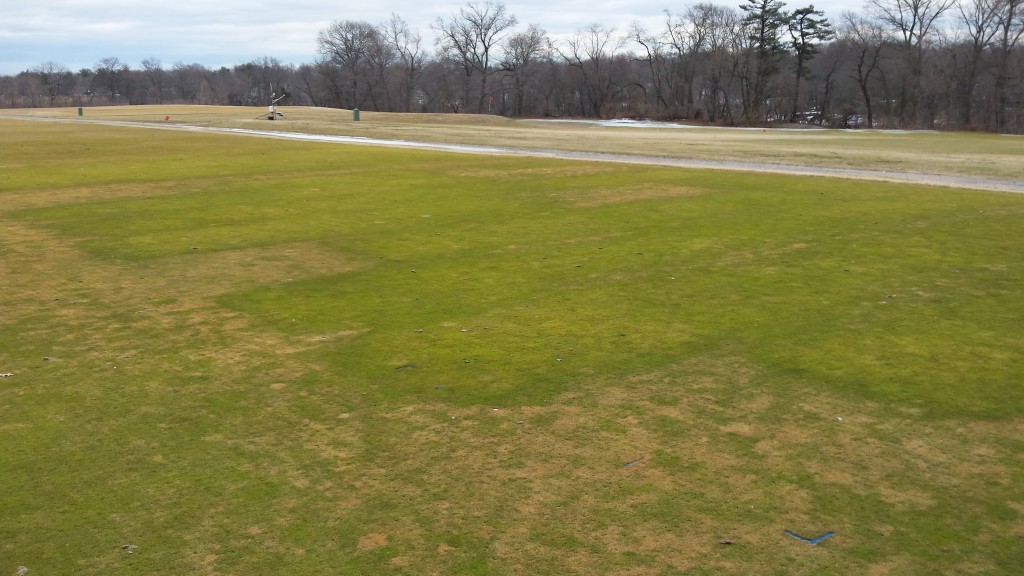We lost the ice cover on our Poa annua trials two weekends ago (March 7-8th) and initially the turf looked okay. But now… it doesn’t. And it will probably get worse, if we are reading the symptoms correctly.
Last Friday (March 13), my graduate student, Chas Schmid, informed me that I needed to look at his potassium trial on our Poa annua turf. There was a huge difference between no‑K and K fertilized plots. The no-K plots have steadily lost green color and become very blotchy. Plants taken from those plots are water-soaked and feel mushy when squeezed (How is that for a scientific description?). Dr. Lindsay Hoffman has a lot of experience with winterkill on Poa annua in Massachusetts and she is convinced that many of the plants are dead. And it smells like it – silage on a dairy farm!

Blotchy, tan-colored plots and borders around this potassium trial are suffering from winterkill. Green, healthier looking turf received K fertilization; dying turf did not.
(15 March 2015)
Take home for me – don’t let your Poa annua turf become potassium deficient! Chas’ data for suppressing anthracnose severity indicates that a soil test (Mehlich 3) ≥50 ppm K and a tissue level of ≥2% K in the clippings are indicators that the K level is good. And winterkill in March 2015 hasn’t changed my mind about that data!
Looks like this might be the end of this Poa annua field. Dr. William Meyer said, “Good riddance.”

